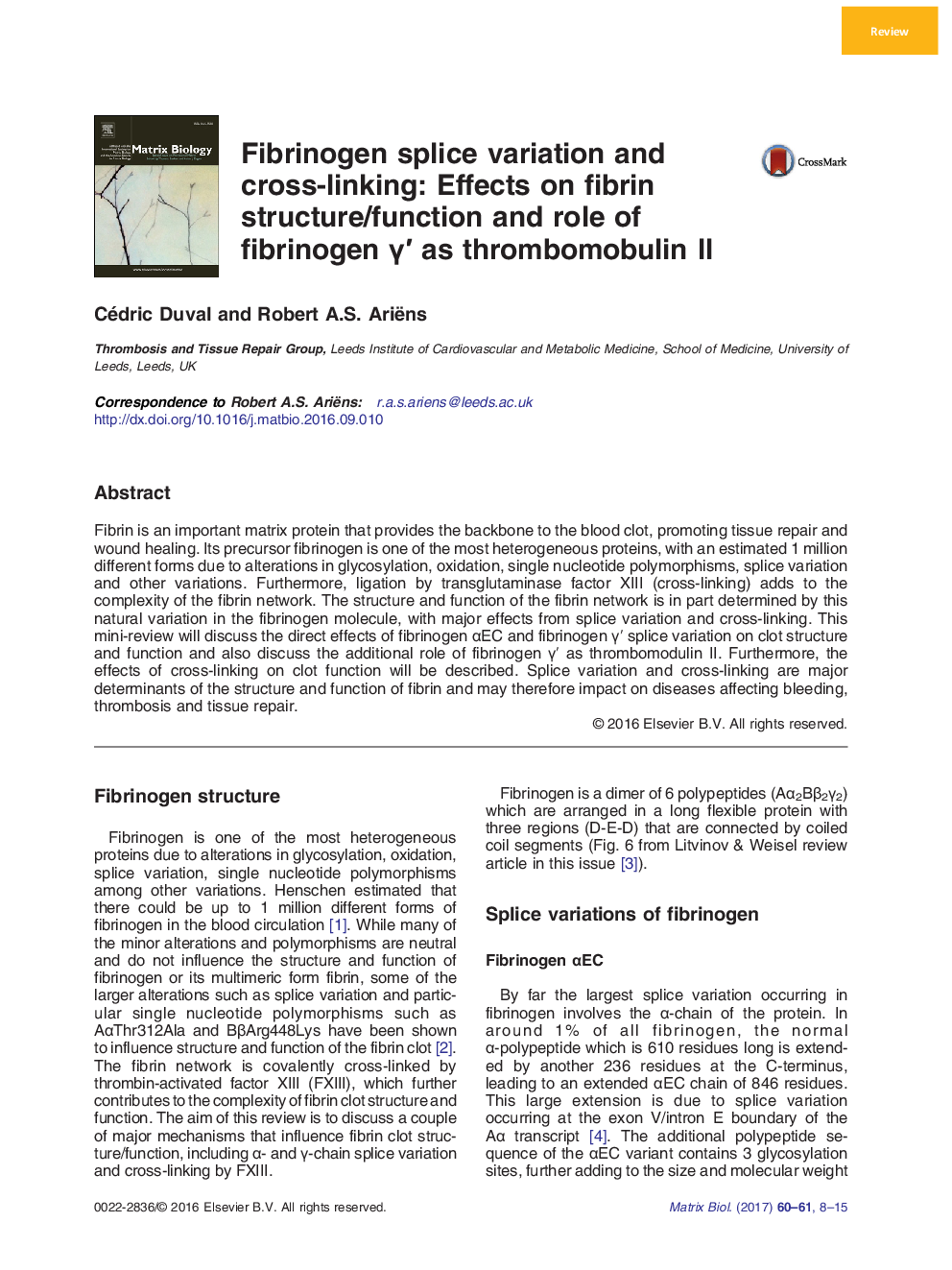| Article ID | Journal | Published Year | Pages | File Type |
|---|---|---|---|---|
| 5528559 | Matrix Biology | 2017 | 8 Pages |
â¢Fibrinogen αEC splice variant, extended C-terminus, produces stiffer clots, with thinner fibres.â¢Fibrinogen γ' splice variant, which is more negatively charged, leads to the formation of less stiff clots that have a more heterogeneous network, made of thinner fibres.â¢Fibrinogen γ' acts as thrombomodulin II, due to its high affinity interaction with thrombin exosite II, and thereby regulates thrombin activity and stability.â¢Cross-linking of the α- and γ-chain of fibrin by FXIII, and various substrates (fibronectin and thrombospondin-1) to fibrin affects clots structure, stability and stiffness.â¢Cross-linking of the α2-AP to fibrin affects clots stability by reducing lysis.
Fibrin is an important matrix protein that provides the backbone to the blood clot, promoting tissue repair and wound healing. Its precursor fibrinogen is one of the most heterogeneous proteins, with an estimated 1 million different forms due to alterations in glycosylation, oxidation, single nucleotide polymorphisms, splice variation and other variations. Furthermore, ligation by transglutaminase factor XIII (cross-linking) adds to the complexity of the fibrin network. The structure and function of the fibrin network is in part determined by this natural variation in the fibrinogen molecule, with major effects from splice variation and cross-linking. This mini-review will discuss the direct effects of fibrinogen αEC and fibrinogen γⲠsplice variation on clot structure and function and also discuss the additional role of fibrinogen γⲠas thrombomodulin II. Furthermore, the effects of cross-linking on clot function will be described. Splice variation and cross-linking are major determinants of the structure and function of fibrin and may therefore impact on diseases affecting bleeding, thrombosis and tissue repair.
